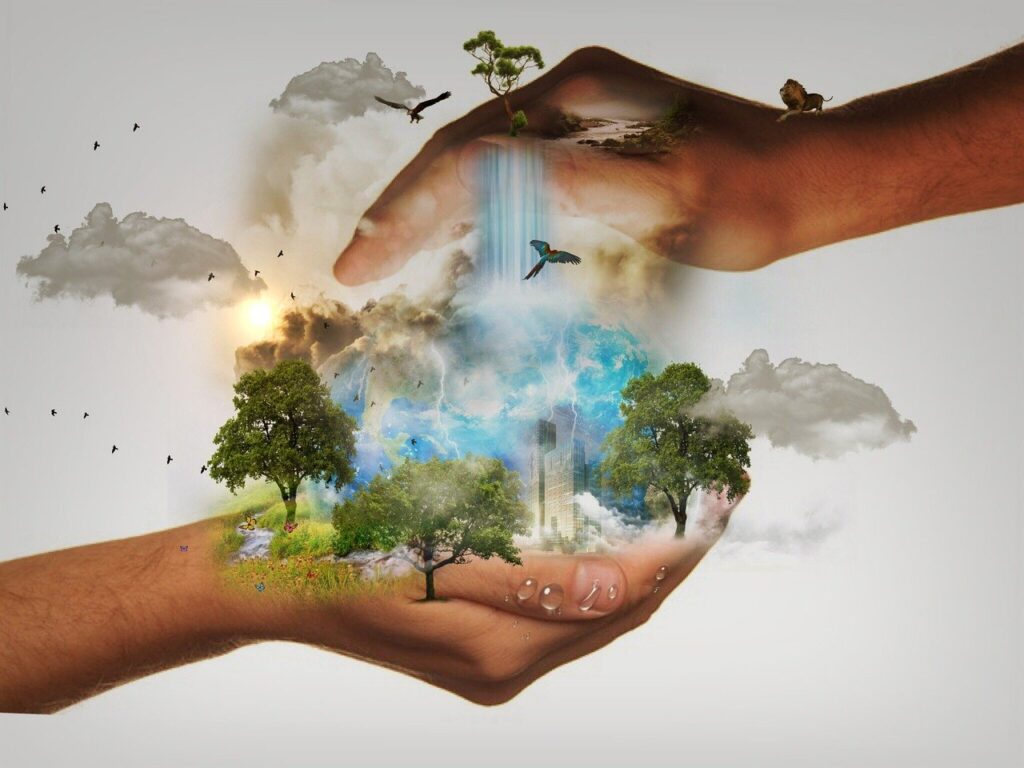Death and rebirth have fascinated humanity since the dawn of consciousness. This symbolic journey represents transformation, renewal, and the eternal cycle that defines existence across cultures, religions, and philosophical traditions throughout history.
The metaphorical passage from darkness to light transcends literal mortality, embodying psychological metamorphosis, spiritual awakening, and personal evolution. Understanding this archetypal journey offers profound insights into human resilience, hope, and the transformative power embedded within our darkest moments.
🌑 The Universal Symbolism of Darkness and Death
Darkness has represented the unknown, the unconscious, and the transformative void across civilizations. In ancient Egyptian mythology, the sun god Ra traveled through the underworld each night, battling chaos to emerge reborn at dawn. This daily cycle mirrored the human experience of confronting inner demons and emerging transformed.
The symbolic death appears in countless traditions not as an ending, but as a necessary precursor to transformation. Native American vision quests, Shamanic initiations, and Buddhist meditation practices all incorporate elements of symbolic death—a temporary dissolution of the ego that allows for spiritual rebirth and expanded consciousness.
Western psychology later recognized these patterns through Carl Jung’s concept of the “dark night of the soul.” This psychological death represents the disintegration of outdated belief systems, identities, and attachments that no longer serve growth. The darkness becomes a crucible where transformation occurs, though the process feels like annihilation to the individual experiencing it.
Cultural Representations Across Time
Ancient Greek mysteries at Eleusis centered on the myth of Persephone’s descent into the underworld and subsequent return. Initiates underwent symbolic death rituals that promised spiritual rebirth and enlightenment. Similarly, Christian baptism represents dying to the old self and rising purified—a death and resurrection enacted through ritual immersion.
Eastern philosophies approach this symbolism differently yet arrive at similar conclusions. The Hindu concept of samsara—the cycle of death and rebirth—teaches that endings are inseparable from beginnings. Each death, whether physical or symbolic, carries the seed of new life within it.
💀 The Necessity of Symbolic Death in Personal Growth
Personal transformation requires the death of former identities. The person you were yesterday must die for tomorrow’s self to emerge. This isn’t metaphorical hyperbole but a psychological reality confirmed by neuroscience, which shows that significant life changes literally rewire neural pathways.
Life transitions—graduation, career changes, relationship endings, illness, or loss—force symbolic deaths upon us. These moments strip away familiar frameworks, leaving individuals temporarily lost in darkness. The pain isn’t accidental but essential, burning away attachments to outdated self-concepts.
Resistance to this process intensifies suffering. Those who cling desperately to dying identities or circumstances prolong their agony. Acceptance of the symbolic death—surrendering to the darkness—paradoxically accelerates the journey toward light. This surrender doesn’t mean passivity but rather acknowledging reality without denial.
The Ego Death Experience
Spiritual traditions worldwide recognize ego death as a transformative milestone. The ego—our constructed sense of separate self—must temporarily dissolve for individuals to experience unity consciousness or transcendent awareness. This dissolution terrifies because it feels like actual death, yet those who traverse this territory report profound liberation afterward.
Modern therapeutic approaches incorporate symbolic death concepts. Psychedelic-assisted therapy, now researched at prestigious institutions, often involves ego dissolution experiences that help patients release trauma, addiction, and limiting beliefs. The temporary “death” of rigid thought patterns creates space for healing and renewal.
🌅 The Liminal Space: Between Death and Rebirth
The most challenging phase in the death-to-light journey occurs in the liminal space—that ambiguous threshold between what was and what will be. Anthropologist Victor Turner studied these “betwixt and between” states in ritual contexts, noting their disorienting yet transformative power.
This transitional darkness holds no clear map. Former guideposts have disappeared, while new ones haven’t yet emerged. Individuals in liminal spaces often report feeling lost, anxious, and uncertain about their identity and direction. This discomfort is neither failure nor pathology but an inherent feature of transformation.
The liminal phase demands patience and trust—qualities difficult to muster when nothing feels solid. Spiritual traditions offer practices to navigate this terrain: meditation maintains presence amid uncertainty, contemplation helps process the transition, and community provides anchoring when individual moorings have dissolved.
Navigating the Void 🕳️
The void between death and rebirth serves crucial purposes. This emptiness clears away debris from the old life, creating space for the new. Rushing through this phase or artificially filling the emptiness prevents authentic transformation. The void must be honored, not escaped.
Practical strategies for navigating liminal darkness include journaling to process emerging insights, spending time in nature to connect with natural cycles of death and renewal, and engaging creative expression to channel the raw energy of transformation. These practices don’t eliminate discomfort but make it more bearable and meaningful.
✨ The Dawn: Emergence and Reawakening
Eventually, imperceptibly at first, light begins penetrating the darkness. New perspectives emerge, fresh possibilities appear, and renewed energy returns. The symbolic rebirth doesn’t occur as a single dramatic moment but as gradual awakening—dawn rather than lightning strike.
This reawakening brings expanded awareness. Having died to former limitations, individuals emerge with broadened consciousness, deeper compassion, and greater authenticity. The journey through darkness strips away pretense, revealing essential truth about oneself and existence.
Post-transformation individuals often report feeling simultaneously more themselves and less attached to rigid self-definitions. The death-rebirth journey paradoxically strengthens authentic identity while loosening egoic grip. This creates flexibility, resilience, and openness to continued growth.
Integrating the Transformation
Genuine rebirth requires integration—consciously incorporating insights gained in darkness into daily life. Without integration, the transformation remains abstract or temporary. Integration involves practical changes: new behaviors, boundaries, relationships, or life directions aligned with the reborn self.
This phase presents its own challenges. The reborn individual must function in a world that hasn’t changed, though they have transformed profoundly. Relationships may need renegotiation, work situations might require adjustment, and former activities may no longer resonate. The light brings clarity but also responsibility to live authentically.
🔄 The Spiral Nature of Death and Rebirth
The journey from darkness to light isn’t linear or singular. Life presents repeated cycles of death and rebirth, each iteration spiraling deeper. What appears as regression—returning to familiar struggles—often represents encountering the same issues from a more conscious level.
Understanding this spiral nature prevents discouragement. When darkness returns after a period of light, it doesn’t negate previous growth. Each cycle peels away another layer, refines awareness further, and expands capacity for transformation. The spiral ascends even when it feels like circular repetition.
Seasonal cycles in nature demonstrate this principle beautifully. Winter’s death leads to spring’s rebirth annually, yet each year brings subtle differences. Similarly, human transformation occurs through repeated cycles, each contributing to overall evolution.
Preparing for Future Cycles
Experience with death-rebirth cycles builds capacity for navigating them more skillfully. Individuals who have traversed darkness and emerged into light develop trust in the process. This trust doesn’t eliminate fear or pain but provides context that makes suffering more bearable.
Practices that support ongoing transformation include regular self-reflection, maintaining flexibility in beliefs and identity, cultivating supportive communities, and developing spiritual or philosophical frameworks that accommodate change. These foundations provide stability amid inevitable future upheavals.
🌍 Collective Darkness and Cultural Reawakening
The death-rebirth journey applies beyond individuals to communities, cultures, and civilizations. Societies undergo collective dark nights—wars, plagues, economic collapses, environmental crises—that force transformation. Current global challenges suggest humanity may be experiencing collective symbolic death preceding potential reawakening.
Historical examples abound: the Renaissance emerged from medieval darkness, civil rights movements arose from oppression’s depths, and scientific revolutions followed periods of intellectual stagnation. Collective darkness concentrates pressure for change until transformation becomes inevitable.
Contemporary crises—climate change, political polarization, technological disruption, pandemic trauma—create collective liminal space. Familiar systems and certainties dissolve while new structures haven’t fully formed. This societal threshold generates widespread anxiety yet also holds transformative potential.
Role of Individuals in Collective Transformation
Individual transformation contributes to collective reawakening. As more people traverse personal death-rebirth journeys, consciousness shifts ripple outward. Personal healing doesn’t remain isolated but influences families, communities, and culture through example and energetic presence.
Those who have integrated their own darkness-to-light journeys can serve as guides for others. Whether through formal roles—therapists, teachers, spiritual directors—or informal presence, transformed individuals illuminate paths through darkness that they’ve already navigated.
🎭 The Shadow: Embracing Darkness as Teacher
Jung’s concept of the shadow—rejected aspects of self relegated to unconsciousness—reveals darkness as teacher rather than enemy. Symbolic death often involves confronting shadow material: denied emotions, repressed desires, disowned qualities. This confrontation feels like death because it challenges carefully constructed self-images.
Embracing the shadow doesn’t mean acting on destructive impulses but rather acknowledging their existence. This acknowledgment integrates split-off energy, reducing its unconscious influence and making more vitality available for conscious living. The darkness within, when faced courageously, becomes a source of wholeness.
Shadow work forms essential preparation for authentic rebirth. Without confronting darkness within, transformation remains superficial—rearranging surface features while core patterns persist unchanged. Deep rebirth requires descending into personal underworld and retrieving rejected aspects of self.
🕊️ Transcendence: Beyond the Cycle
Some spiritual traditions point toward transcending the death-rebirth cycle entirely. Enlightenment in Buddhism, moksha in Hinduism, and union with the divine in mystical Christianity all suggest liberation from the wheel of suffering and transformation. This transcendence represents a different relationship to darkness and light—seeing both as illusory aspects of undivided reality.
Whether such complete transcendence is achievable or even desirable remains debatable. For most humans, the practical spiritual path involves skillful engagement with repeated cycles rather than permanent escape. Each iteration of darkness-to-light deepens wisdom, compassion, and presence—perhaps this ongoing evolution is the point rather than reaching a final state.
Even those reporting transcendent experiences typically return to ordinary reality, where death and rebirth continue. The transformation isn’t escape but shift in perspective—relating to cycles with equanimity rather than resistance, seeing them as opportunities for refinement rather than punishments to endure.
🌟 Living as Reborn: Daily Practice of Death and Renewal
The symbolic journey from darkness to light needn’t await major life crises. Daily practice incorporates mini death-rebirth cycles: releasing yesterday’s grievances each morning, letting go of outcomes, surrendering control over uncontrollable circumstances. These small deaths accumulate, developing capacity for larger transformations.
Mindfulness practices train awareness of impermanence—the constant arising and passing of thoughts, emotions, and sensations. Each breath models the death-rebirth cycle: exhaling releases, inhaling renews. This micro-level practice builds skills applicable to macro-level life transitions.
Gratitude for light becomes richer after experiencing darkness. Those who have traversed deep suffering often report enhanced appreciation for simple joys—sunrise, friendship, ordinary comfort. The contrast between darkness and light intensifies awareness of light’s preciousness, preventing it from being taken for granted.
The Eternal Return to Light 💫
The symbolic journey from darkness to light ultimately teaches trust in life’s fundamental benevolence. Darkness isn’t punishment but portal, death isn’t ending but transformation, and suffering contains seeds of awakening. This doesn’t romanticize pain or suggest darkness should be sought, but recognizes its inevitability and potential.
Each person’s journey through darkness looks different—there’s no standard timeline or experience. Honoring individual paths while recognizing universal patterns allows both personal authenticity and collective wisdom. Your darkness is uniquely yours; the light you find illuminates not just your path but serves as beacon for others still navigating their own night.
The journey never truly ends. Light fades into darkness, darkness brightens into light, in eternal cycles that define existence. Rather than resisting this rhythm, wisdom lies in dancing with it—surrendering to descent when darkness comes, gratefully receiving illumination when light returns, and trusting the process throughout. From darkness to light, death to reawakening, we traverse the sacred journey that makes us fully human and fully alive.
Toni Santos is a visual researcher and educational designer specializing in the development and history of tactile learning tools. Through a hands-on and sensory-focused lens, Toni investigates how physical objects and textures have been used to enhance understanding, memory, and creativity across cultures and ages, while exploring the transformative practices of shamanic journeying, sacred plant medicines, and spiritual rituals. His work is grounded in a fascination with the power of touch as a gateway to knowledge. From embossed maps and textured alphabets to handcrafted manipulatives and sensory kits, Toni uncovers the subtle ways tactile tools shape cognitive development and learning experiences, while engaging with shamanic journeying and altered states, sacred plant medicines and their use, spirit animals and totems, and rituals for personal transformation. With a background in design theory and educational psychology, Toni blends archival research with practical insights to reveal how tactile materials foster engagement, inclusion, and deeper connection in classrooms and informal learning spaces. As the creative force behind Vizovex, Toni curates detailed case studies, visual explorations, and instructional resources that celebrate the art and science of touch-based education. His work is a tribute to: The transformative role of tactile tools in learning The intersection of sensory experience, cognition, and spiritual insight The craft and innovation behind educational objects and ritual practices Whether you’re an educator, designer, or lifelong learner, Toni invites you to explore the rich textures of knowledge—one touch, one tool, one discovery at a time.




